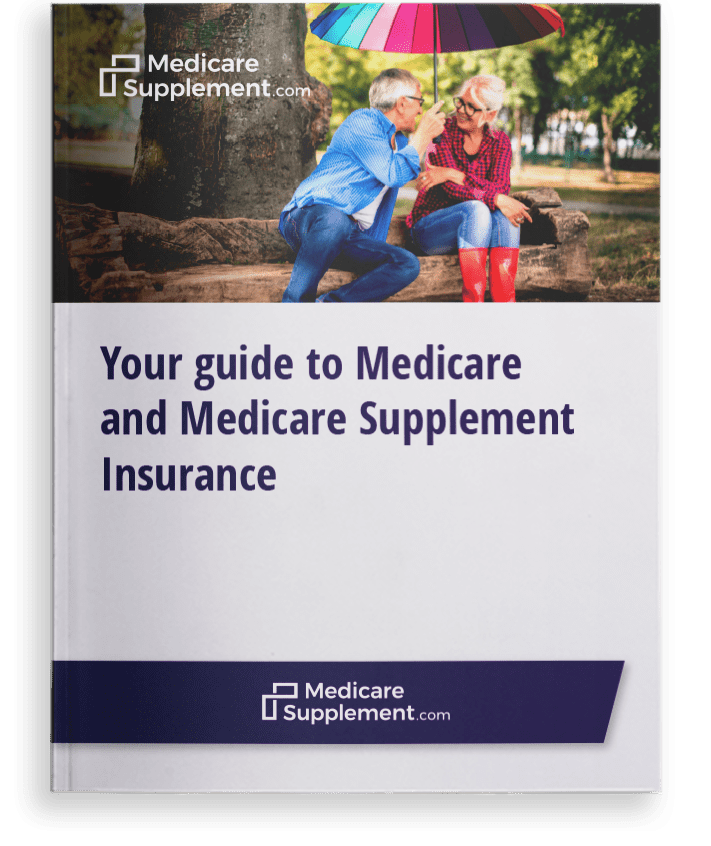Comparing plans
Medigap Plan Comparisons
With 10 Medigap plans to choose from, it may not be easy to know which one is right for you. Drawing a comparison between your different plan options can help you acquire the Medigap plan that is best suited for your health care and budget needs.
When comparing Medigap plans, there are a few different factors to consider.
Availability
Not every Medigap plan is available in every state, so any plan comparison should begin with determining which plans are sold in your state.
Important: Plan F and Plan C are not available to beneficiaries who became eligible for Medicare on or after January 1, 2020.
By calling 1-800-995-4219, a licensed agent can inform you which plans are available in your area.
Coverage
The first thing to compare is the amount of coverage offered by each Medigap plan. By anticipating where your Medicare out-of-pocket spending may come from, you can better narrow down your plan choices and get the Medigap insurance that will cover what you need. Generally, monthly premiums are higher for the plans with more comprehensive benefits.
The chart below compares the benefits offered by the 10 standardized Medigap plans available in most states (Massachusetts, Minnesota and Wisconsin have different plan options). The same type of plan sold by any insurer must offer the same basic benefits common to that type of plan.
For example, Medigap Plan B in Colorado must offer the same basic benefits as Medigap Plan B sold in North Carolina.
Scroll to the right to continue reading the chart
Medicare Supplement Benefits
Part A coinsurance and hospital coverage
Part B coinsurance or copayment
Part A hospice care coinsurance or copayment
First 3 pints of blood
Skilled nursing facility coinsurance
Part A deductible
Part B deductible
Part B excess charges
Foreign travel emergency
| Medicare Supplement Benefits | A | B | C* | D | F1* | G1 | K2 | L3 | M | N4 |
|---|---|---|---|---|---|---|---|---|---|---|
| Part A coinsurance and hospital coverage | ||||||||||
| Part B coinsurance or copayment | 50% | 75% | ||||||||
| Part A hospice care coinsurance or copayment | 50% | 75% | ||||||||
| First 3 pints of blood | 50% | 75% | ||||||||
| Skilled nursing facility coinsurance | 50% | 75% | ||||||||
| Part A deductible | 50% | 75% | 50% | |||||||
| Part B deductible | ||||||||||
| Part B excess charges | ||||||||||
| Foreign travel emergency | 80% | 80% | 80% | 80% | 80% | 80% |
* Plan F and Plan C are not available to Medicare beneficiaries who became eligible for Medicare on or after January 1, 2020. If you became eligible for Medicare before 2020, you may still be able to enroll in Plan F or Plan C as long as they are available in your area.
+ Read moreCost
A comparison of Medigap plans wouldn't be complete without looking at quotes offered by different insurance companies all selling the same plan. The cost of a Medigap plan can differ from one company to the next and each company is free to offer their own discounts and pricing models.
Medicare Supplement Insurance companies can charge different premiums for policies depending on a number of factors, including age and location.
Monthly premiums can change over time, especially if you purchase a plan that factors your age into its pricing strategy. Ask a licensed insurance agent about how the company determines its rates before you purchase a plan. Medigap policies can be priced in one of three ways:
- Community-rated
Also called no-age-rated, these policies cost the same amount for everybody on that particular type of Medigap plan, regardless of how old you were when you bought it. Older people are not charged more per month with these plans. - Issue-age-rated
Premiums are lower for younger buyers of these types of Medicare Supplement Insurance plans, as they are priced according to when you purchase the policy (or when the policy was issued to you). Your monthly premium is determined at the start of your policy and does not continue to go up over time due to age. - Attained-age-rated
With these plans, premiums always correspond to your current age (or the age you have “attained”). Premiums increase over time to reflect the increased risk to the insurer as you get older. These may start out relatively inexpensive, but they often become the most expensive Medigap plans over time.
Note: Premiums can always go up over time due to inflation or other factors, regardless of the company’s pricing structure.
Popular Medigap Plan Comparisons
Plan F is the most popular Medigap plan, with Plan C coming in second place. Plan F is the most comprehensive plan with coverage for all nine of the benefit areas Medigap plans can offer.
Plan C is one of the most comprehensive plans, but it does not include coverage for Medicare Part B excess charges.
Enrolling in a Medigap Plan
If you enroll in Medigap during your Medigap open enrollment period (the six months after you are at least age 65 and enrolled in Medicare Part B), insurance companies cannot refuse to sell you a Medigap policy or charge you more for a plan based on your health history.
Some people who are under 65 are also eligible for Medicare and Medigap, such as people with End-Stage Renal Disease or other qualifying disabilities. However, you don’t have the same blanket guaranteed-issue rights that pertain to people over 65.
The easiest way to compare Medigap plans and rates in your area is with the help of a licensed insurance agent. Agents can answer questions and help you find the right plan for your needs.
Connect with an agent online or give us a call at 1-800-995-4219 today to compare Medigap plans in your area.

Get a Free Medicare Guide!
Enter your email address and get a free guide to Medicare and Medicare Supplement Insurance, as well as important Medicare news and tips. We promise to never send you spam – just helpful content!
By clicking "Get your guide" you are agreeing to receive emails from MedicareSupplement.com.

